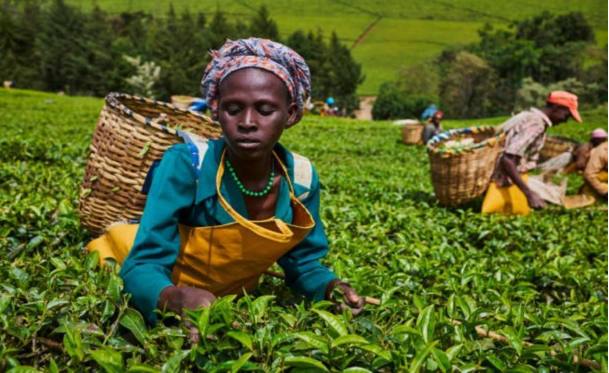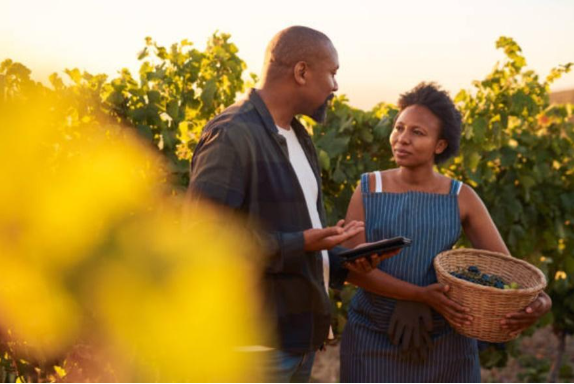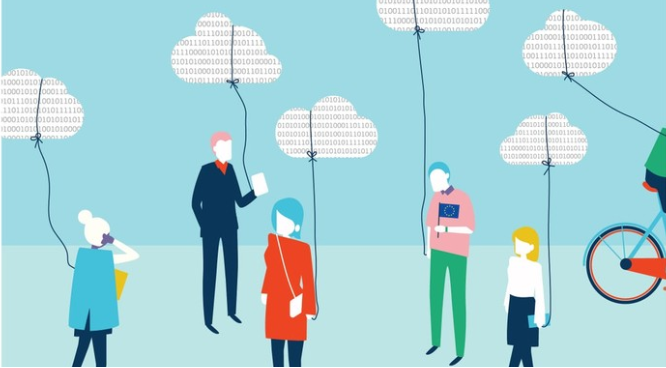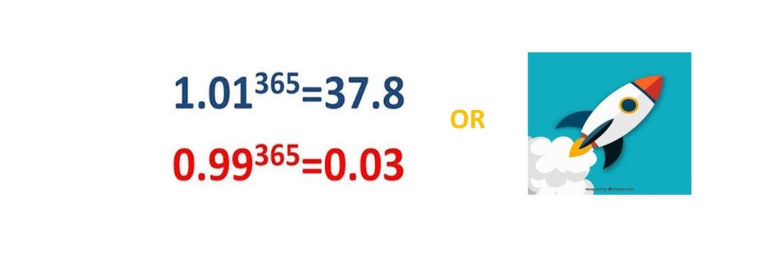Kristallnacht, or simply Pogromnacht, occurred 80 years ago on November 9-10, 1938. The Pogrom was…
Reimagining Development Can Revolutionize African Agriculture and Livelihoods
Bob Bush, Dikembe Mutombo January 16th, 2024

https://www.weforum.org/agenda/2020/06/we-need-to-reimagine-our-food-systems-for-a-post-covid-world/ using systems thinking
there are a couple of good charts that illustrate the data better than text
Africa needs to be more interconnected see Mckinsey piece
The world stands at a crossroads. The spectre of climate change looms large, casting a shadow over food security, economic stability, and social cohesion. Yet, amidst this uncertainty, a seed of hope sprouts: the possibility of reimagining development and future economies.
In today’s world, agriculture faces a crucial crossroads marked by the vulnerability of crops to changing weather. Farmers grapple with challenges like droughts, excessive rainfall, and pests that thrive in extreme conditions.
While debates about broader climate change exist, what’s undeniable is that African agriculture is at risk due to these unpredictable weather patterns. In this article, we explore the pressing issues of crop vulnerability and offer insights into reimagining development and future economies in light of these challenges.
In the quest to foster economic development and ensure food security across the globe, agriculture stands as a vital cornerstone. Agriculture accounts for a significant portion of many economies, particularly in Africa, where it contributes substantially to GDP and provides livelihoods for a substantial proportion of the population.
The GDP growth in Africa suffered a 35 percent decline due to the COVID-19 pandemic. Unfortunately, the pandemic has further affected the continent.
Currently, 60 percent of Africa’s population lives in poverty, mainly due to the per capita income growth rate that has only been averaging 1.1 percent a year since 1960.
New models of development that prioritize the livelihoods of local communities are needed. The focus on macroeconomic indicators needs to shift towards holistic human development. Small businesses and rural farmers have been overlooked and underserved, but they represent the future of developing countries.
Development should be reimagined around concepts like regenerative agriculture, sustainable local enterprise, and social investing to boost prosperity and food security. These innovative approaches support bottom-up solutions and chart a more equitable and sustainable path for global development.
Challenges With Current Development Models
Despite significant progress in reducing extreme poverty over the past few decades, current economic development models have yet to benefit everyone equally.
Over one billion people have moved out of extreme poverty since 1990, representing a major achievement in human development. This progress was driven by factors like economic growth, improved education and healthcare, and social safety nets.
However, recent setbacks due to the COVID-19 pandemic and other global crises have reversed some of these gains. Estimates suggest that around 75 to 90 million people were pushed back into extreme poverty in 2020, highlighting the fragility of progress.
Nearly half the world still lives on less than $5.50 a day. Hunger and malnutrition remain serious issues, with an estimated 820 million people suffering from chronic undernourishment globally.
In Africa, while economic growth has been strong in recent years, poverty and food insecurity persist, especially in rural areas.
Despite persisting challenges like poverty and food insecurity in rural Africa, an undeniable optimism for the continent’s agricultural future emerges. Africa’s rapid population growth translates into a burgeoning demand for food, presenting a significant market opportunity for investors.
Furthermore, a rising middle class with increasing purchasing power necessitates diversification and value addition in the agricultural sector. These factors, coupled with vast swathes of fertile land and supportive government policies, create an environment ripe for investment in sustainable and efficient food production and distribution systems.
Technological advancements and a focus on environmentally conscious practices further amplify the potential for a prosperous and food-secure future for Africa. By acknowledging both the challenges and the immense opportunities, we can ensure that Africa’s agricultural narrative evolves into one of progress and transformative growth.
Small-scale farmers, who account for a large share of the labour force, face numerous challenges. They need access to financial services, modern technologies, and markets where they can get fair prices for their crops.
Prices that must reflect true cost of labour inputs (many farmers, especially women, are subsidizing true labour costs through their “sweat equity”), not based on leverage and negotiating power with the many nearby intermediaries in the supply chain and markets that are set by commodities brokers thousands of miles away. This keeps them trapped in subsistence farming, unable to earn enough income to lift them out of poverty.
Currently, 460 million people, accounting for 36 percent of the entire African population, are vulnerable to various climate hazards, including drought, heat, water stress, or flooding.
However, this number is projected to increase to almost 900 million people, or 45 percent of the continent’s population, by 2050 in a scenario where the global temperature increases by 2°C.
There is a need to re-examine how we approach economic development with innovative models that empower people to lift themselves out of poverty.
The Role of Smallholder Farmers
Smallholder farmers play a critical role in the development, food security, and livelihoods of rural communities across Africa and other regions. Approximately 80% of the world’s food supply comes from over 500 million small farms globally.
In sub-Saharan Africa alone, smallholder farmers account for 80% of farmland and provide up to 90% of the food supply. These small-scale farmers typically cultivate plots of less than 2 hectares in size using family labour.
Lack of access to finance, quality inputs, infrastructure, markets, and extension services also constrain productivity. Empowering these smallholders with secure land rights, financial services, training, and access to markets can unlock their potential to drive rural development and food security.
Targeted investments and policies to support small farms are essential for building resilient local economies and supply chains across the developing world.
The Need for New Approaches

Decades of traditional aid has failed to lift smallholder farmers and rural communities out of poverty in developing countries. Food aid and other forms of charity may provide temporary relief but often undermine local markets and create dependency.
What is needed is a new model focused on financially sustainable livelihoods through commerce, not charity.
The fertile ground for this new development model lies in a three-pronged approach:
1. Empowering Farmers through Social Investing.
Charity has its place, but in many instances it’s merely a bandage on a broken leg. The true path to progress lies in equipping farmers with the tools and resources they need to thrive.
Social investing models, where investors back initiatives that generate both financial returns and positive social impact, hold immense promise. Imagine microloans for purchasing drought-resistant seeds, community-owned solar-powered irrigation systems, or farmer cooperatives that negotiate fair prices with buyers.
These investments, nurtured by the expertise of the private sector and the guidance of the government, can blossom into financially sustainable livelihoods for farmers, breaking the cycle of dependence and unleashing their entrepreneurial spirit.
Examples with potential include Root Capital and the Smallholder Safety Net Upscaling Programme (SSNUP) fund by IFAD. Root Capital and the SSNUP are examples of models that are showing promising financial and social returns.
2. Regenerating Ecosystems for Improved Yields
The land is not just a field to be exploited but a living, breathing entity. Regenerative agriculture practices, like crop rotation, cover cropping, and composting, are not just buzzwords but tools to heal the earth.
By restoring soil health, these practices boost yields, improve water retention, and sequester carbon. The benefits extend beyond the farm, fostering biodiversity, creating more astonishing landscapes, and building resilience against climate change.
This shift towards regenerative agriculture requires knowledge sharing, capacity building, and incentives for farmers to adopt these practices. Here, governments and NGOs can play a crucial role, providing training, technical assistance, and financial support to make this transition as smooth as possible.
3. Creating Value-Added Supply Chains
Africa’s agricultural bounty shouldn’t just feed its people; it should fuel its prosperity. Building efficient, value-added supply chains is critical to capturing the true potential of its produce.
Imagine local processing facilities transforming raw crops into value-added products like organic flours, dried fruits, or cold-pressed oils. This adds not just profit but resilience. By diversifying income streams and reducing dependence on raw commodities, farmers become less vulnerable to price fluctuations and market shocks.
The private sector has a critical role to play here, investing in infrastructure like storage facilities, processing units, and cold chains. Governments, meanwhile, can create an enabling environment by simplifying regulations, fostering innovation, and promoting fair trade practices.
Dubai plays a pivotal role in the global food security equation. Its strategic location, including Jebel Ali Port and Al Maktoum International Airport makes it a vital logistics hub for food trade, connecting producers and consumers worldwide. The emirate invests heavily in technologies like vertical farming and desalination, seeking to increase local production and reduce reliance on imports.
A robust policy framework and active knowledge sharing through forums like Gulfood further strengthen Dubai’s position as a champion of food security.
DP World, a global port operator with roots in Dubai, complements these efforts by providing crucial infrastructure and logistical expertise. Their terminals and facilities ensure efficient food storage and transportation, while their focus on automation and sustainability promotes a robust and environmentally conscious food supply chain.
Overall, Dubai and DP World, working together, act as powerful forces in ensuring access to safe and nutritious food for people around the world.
An example of a successful supply chain infrastructure project is the construction of rural paved roads in Tanzania, supported by the World Bank and other partners.
These roads reduced transport costs for crops, doubled school attendance, and increased access to health services. Investing in roads and transport infrastructure unleashes the potential for agricultural commerce.
Accessing Global Markets
Connecting smallholder farmers to global markets can significantly increase incomes and provide sustainable livelihoods. However, accessing these markets poses challenges. Certification programs, fair trade practices, and value addition can help overcome these hurdles.
Certification
Certification programs that adhere to international standards, such as organic, Rainforest Alliance, or Fairtrade, enable farmers to sell certified products at premium prices in global markets. Certification requires investment in training and farm improvements. There is a challenge with these certifications. Often small farmers cannot afford the certifications.
Governments and NGOs can provide support to farmers for the certification process. Large buyers may also fund certification for their suppliers. While accreditation has benefits, it can also create dependence on volatile export markets. Diversification across markets is key.
Fair Trade
Fair trade organizations create direct relationships between producers and overseas buyers. This increases farmers’ incomes through proper pricing, social premiums, and access to pre-harvest credit.
Fairtrade focuses on marginalized producers and promotes environmental sustainability. Critics argue the model reaches too few farmers, but the movement continues to grow. Fairtrade marketing helps smallholders reach conscious consumers worldwide.
For instance, the Alliance for a Green Revolution in Africa (AGRA) has collaborated with partners across 16 African countries to connect smallholders to markets.
Fair trade aims to empower farmers in developing countries. By connecting them directly with buyers, it boosts their income through fair prices, bonus funds, and pre-harvest loans.
Nevertheless, there are some pros and cons to the fair trade model to consider.
| Pros | Cons |
| Deeper pockets: Farmers have the potential to earn more, lifting them out of poverty and improving their families’ lives.Better work life: Safe conditions, fair wages, and child labor bans create a more dignified work environment.Greener fields: Sustainable practices protect the environment and combat climate change.Stronger communities: Fair trade premiums fund schools, hospitals, and other vital projects.Empowered consumers: Conscious shoppers can support ethical practices and raise awareness. | Small reach: Many farmers don’t benefit due to complex and costly certification.Pricey products: Consumers may find fair trade items too expensive.Certification burden: Small producers struggle with the cost of accreditation. Green washing risk: Some companies might make false claims about their ethical sourcing. |
Despite these considerations, whether an enterprise is officially designated “Fair Trade” fair trade remains a crucial force for good. By choosing fair trade products, consumers can contribute to social justice and environmental responsibility in the global food system.
Value Addition
Rather than exporting raw commodities, value addition allows farmers to process goods and sell end products. Processing coffee, cocoa, or fruits locally creates more profit in producing countries.
Value addition requires equipment, infrastructure, and skills. Partnerships with private sector actors can provide capital and technical expertise. Governments can establish value-added facilities and programs to build workforce capacity.
Moving up the value chain promotes the growth of manufacturing and services sectors in developing countries.
Examples include cocoa producer ECOM trading directly with 140,000 farmers in West Africa and Indonesia’s NuFarm.
Hershey, the chocolate giant, isn’t just buying cocoa beans anymore. In Ghana, they’ve partnered with a local company to build a cocoa processing facility. This means Ghanaian farmers can sell them processed cocoa butter and cocoa mass, fetching a higher price than raw beans. The project also creates jobs and boosts skills in the community.
Diageo, the beverage maker, isn’t content with just sourcing African sorghum for their beers. In Kenya, they’ve invested in a local malting plant, transforming locally grown sorghum into malt for their beers. This not only increases profits for Kenyan farmers but also reduces reliance on imported malt, strengthening the local economy.
I think the article is much more powerful when the case studies are woven in the document, not put at the end. the storytelling is better.
Case Studies
Numerous organizations have piloted innovative initiatives aimed at empowering smallholder farmers through regenerative commerce models. Here are a few examples:
One Acre Fund
Founded in 2006, One Acre Fund operates in Kenya, Rwanda, Burundi, Tanzania, Malawi, and Uganda, providing smallholder farmers with financing, training, and market facilitation.
They have reached over 4 million farm families, increasing farmers’ profits per acre on average by 50%. Their program focuses on the distribution of high-quality farm inputs, agriculture training, and facilitating market access.
This comprehensive support enables farmers to increase yields, create food security, and achieve a sustainable livelihood.
Kenya’s Green Belt Movement
Founded by Nobel laureate Wangari Maathai, this grassroots environmental organization has empowered women in Kenya to plant millions of trees and engage in sustainable agroforestry practices. This not only improves the environment but also generates income for rural communities.
Lima Links
Peru-based Lima Links works with over 4,000 potato and corn farmers in the Andean highlands. They facilitate access to seeds, fertilisers, and pesticides while also providing agricultural training and buying produce at guaranteed fair prices.
Lima Links then processes the crops and sells them, capturing more value locally. Their model has increased yields by over 30% and incomes by 20% on average for participant farmers.
Mutombo Coffee
Started by NBA Hall of Famer, and global philanthropist Dikembe Mutombo and Social Investor, Bob Bush, Mutombo Coffee seeks to empower farmers by creating a brand that highlights the mission and values of its corporate partners The company curates corporate experiences that encourages employee, community and client engagement while showcasing coffee and cocoa grown in Africa.
The Way Forward
As more governments, development agencies, and private sector actors recognize the need for new paradigms, there are clear steps that can be taken to accelerate the adoption of regenerative models:
- Policymakers should implement incentives and programs to assist smallholder farmers in transitioning to regenerative practices. Government resources for agricultural extension, farmer education, and access to finance should be aligned to support ecological approaches.
- Corporations & Investors must move beyond CSR and fully integrate regenerative models into core business strategies. Sourcing sustainably grown commodities, providing farmers with inputs and services, and building inclusive value chains create shared value.
- NGOs & Foundations should fund pilot programs demonstrating regenerative techniques and share knowledge. Partnerships with communities, government agencies, and companies will catalyse systems change.
- Consumers can use their purchasing power to choose products sourced transparently from regenerative farms. This sends market signals up the value chain.
- Technology like remote sensing, blockchain, and mobile platforms provide data to optimize practices, track supply chains, and access finance. Increased connectivity enables market linkages.
- Standards & Certification through both public and private mechanisms assure quality and reinforce market access. Voluntary sustainability standards continue gaining adherents.
- Farmer Organizations & Cooperatives allow smallholders to share knowledge, access markets, and gain economies of scale. Peer learning networks accelerate the adoption of regenerative practices.
The Triple Bottom Line
Reimagining development and future economies requires a fundamental shift in our approach to agriculture, especially in developing economies like those in Africa.
By promoting regenerative commerce over charity, we can empower farmers with the tools and knowledge they need to lead financially sustainable livelihoods while simultaneously improving environmental sustainability.
Governments, private sector actors, and NGOs must come together to invest in infrastructure, education, and market access, driving the transformation of agriculture from subsistence farming to a dynamic and resilient sector that can shape the future of Africa.
In doing so, we can ensure food security, economic growth, and environmental stewardship for generations to come.
Role of World Government Summit
Reimagining agricultural development in Africa requires more than just good intentions. It demands a global commitment to action, and the World Government Summit stands as a critical platform to make that commitment a reality.
By bringing together world leaders, business executives, NGOs, and experts, the Summit can spark vital discussions on innovative solutions, foster partnerships between diverse stakeholders, and showcase successful models to inspire widespread adoption.
Through this collaborative spirit, we can equip African farmers with the tools and knowledge they need to thrive, ensuring food security, economic growth, and environmental stewardship for generations to come. The future of African agriculture is waiting to be written, and the World Government Summit offers the pen and paper to make it a bright one.
References



